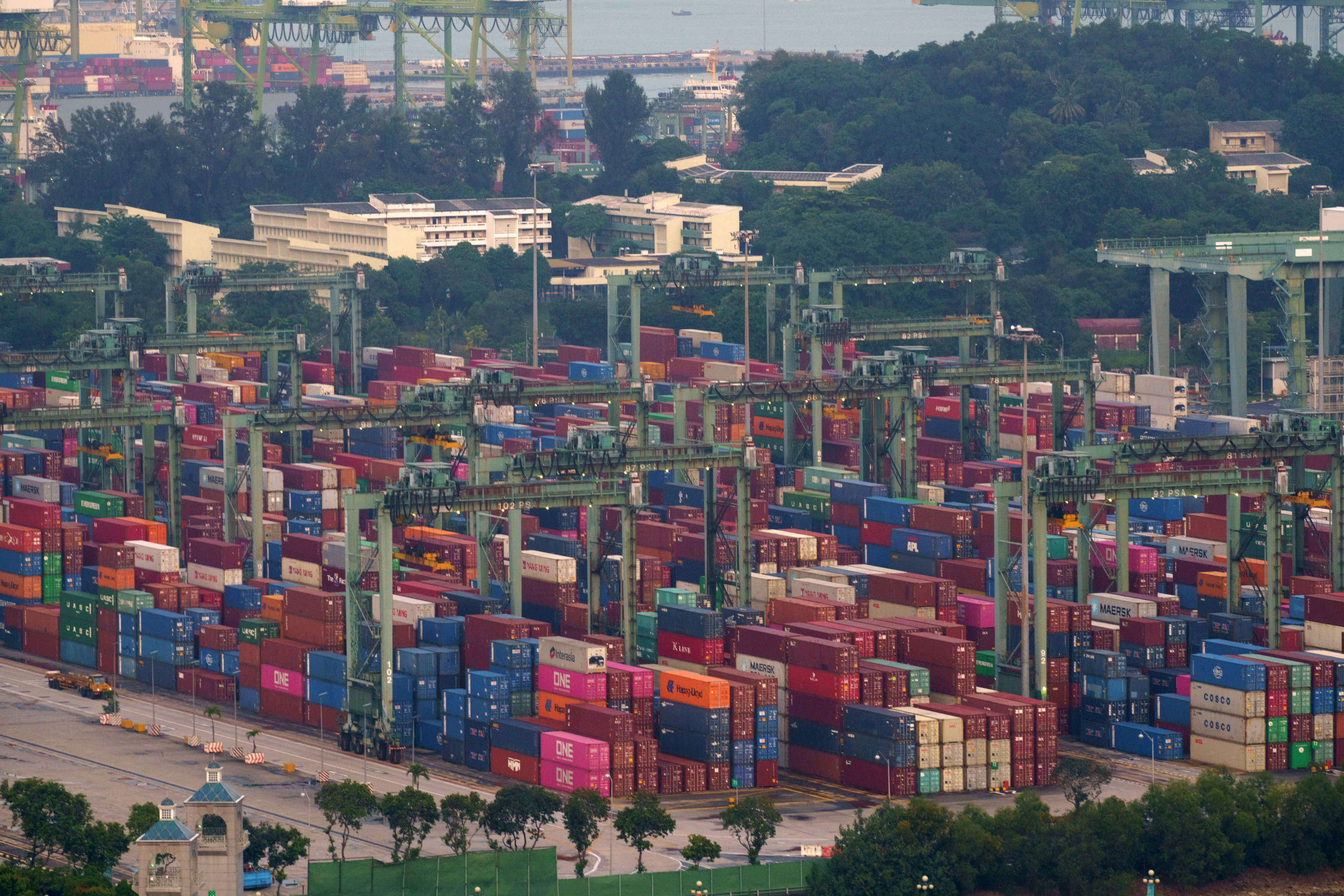SINGAPORE — From price financial savings to higher market entry, there’ll be clear advantages for Singapore companies because the world’s largest trade deal comes into power, the city-state’s trade minister mentioned on Tuesday.
The Regional Comprehensive Economic Partnership, or RCEP, is a mega trade agreement signed by 15 international locations, which collectively cowl about one-third of the world’s inhabitants and make up 30% of the worldwide economic system. It contains China, but excludes the U.S., and got here into impact on Jan. 1.
RCEP is an essential settlement that can enhance trade collaboration and integration throughout the area, Gan Kim Yong, Singapore’s minister for trade and trade, advised CNBC’s “Squawk Box Asia.”
“For the companies, I feel they’ll look ahead to numerous advantages. For a begin, in phrases of tariffs, companies can get pleasure from up to 92% in terms of tariff reduction,” Gan mentioned. “This will save prices for companies, it is going to additionally facilitate market entry.”
The trade deal was signed by the ten member states of the Association of Southeast Asian Nations and 5 of their largest buying and selling companions: China, Japan, South Korea, Australia and New Zealand. Those international locations make up a market of two.2 billion individuals and $26.2 trillion of world output.
There’s plenty of work to be carried out – it isn’t simply signing the settlement and bringing it into power.
Gan Kim Yong
Singapore’s minister for trade and trade
The pact will enable for higher transparency and facilitate providers exports in areas similar to skilled providers, pc and enterprise providers in addition to logistics and distribution, the trade minister mentioned. Investors may also profit from higher certainties round their investments, he added.
“RCEP is additionally an essential sign to the remainder of the world that the member international locations take a look at integration and collaboration as an essential means to proceed to gas the financial development in the area, so, they consider in a rules-based multilateral buying and selling system,” Gan mentioned.
What RCEP means for Singapore
Singapore plans to have interaction with enterprise leaders, enterprise councils, and numerous different trade our bodies to share how firms working in the city-state can make the most of RCEP, in accordance to Gan.
“It’s a journey and in this journey, the primary half is going to be plenty of sharing and schooling,” he mentioned. “There’s plenty of work to be carried out – it isn’t simply signing the settlement and bringing it into power.”
Analysts have beforehand mentioned that RCEP’s financial advantages are modest and that it could take years to materialize. However, the deal has broadly been seen as a geopolitical victory for China at a time when U.S. financial affect in Asia-Pacific has waned.
For his half, Gan advised CNBC that each one RCEP members “play an equal function, play an important function” in the settlement.
Being one of the vital trade-dependent economies in the world, Singapore has plenty of multilateral and bilateral trade agreements past RCEP, such because the ASEAN free trade settlement.
The city-state is additionally part of the Comprehensive and Progressive Trans-Pacific Partnership, an 11-nation mega trade pact that fashioned in 2018 after the United States withdrew from the Trans-Pacific Partnership a 12 months earlier.
Dealing with a number of trade platforms with barely totally different focus and totally different provisions can doubtlessly pose challenges to companies, in accordance to Gan.
“Businesses may have to perceive which settlement applies to them greatest and I feel the [government agencies] will be there to assist clarify to companies what these agreements imply to them, to assist them make the most of the options of those agreements,” he mentioned.
What it means for Asia
RCEP paves the best way for member international locations to talk about methods to make Asia-Pacific provide chains extra resilient, the minister mentioned, including that the settlement simplifies customs processes and cargo clearances, amongst different provisions.
“To a big extent, it does facilitate logistics and distribution in addition to provide chain resilience,” he mentioned. “To guarantee provide chain stays resilient, it is going to [have to] transcend simply the doc in RCEP. It would require key gamers to come collectively to search for options.”
Gantry cranes and stacked containers on the Tanjong Pagar Terminal in Singapore on Sunday, Nov. 7, 2021.
Ore Huiying | Bloomberg | Getty Images
Global provide chains have been disrupted in 2020 due to the coronavirus pandemic, and prompted shutdowns of industries all over the world. Last 12 months, as lockdowns regularly lifted in many components of the world, they triggered a pointy spike in demand.
That’s led to chaos for manufacturers and distributors of goods which haven’t been in a position to produce or provide as a lot as they did earlier than the pandemic. Plenty of causes, similar to labor shortages and shortage of main elements and uncooked supplies, have contributed to that.
With the brand new Covid variant omicron spreading quickly throughout the globe, there’s rising threat of additional disruptions to provide chains if international locations are pressured to lock down once more. That mentioned, research have proven that hospitalizations for people infected with omicron could be fewer in contrast to the extra deadly delta variant.

